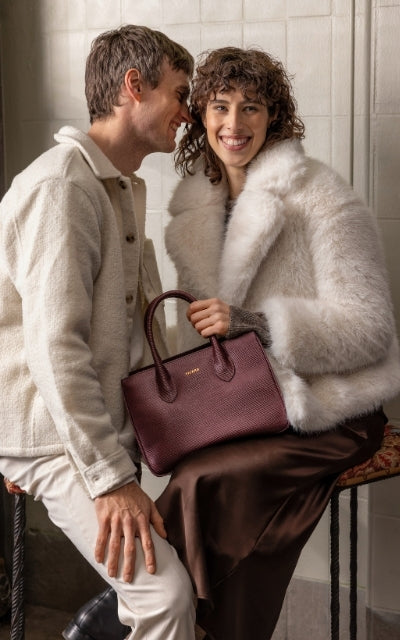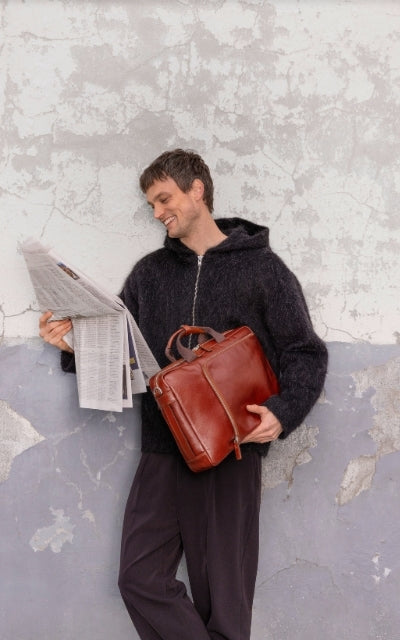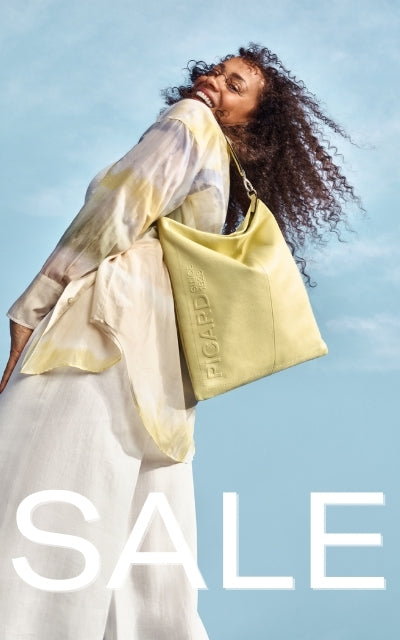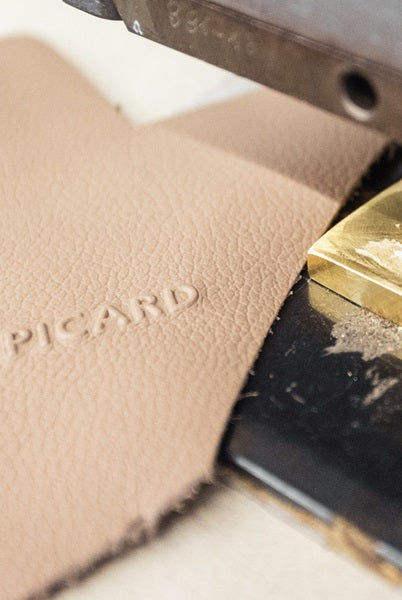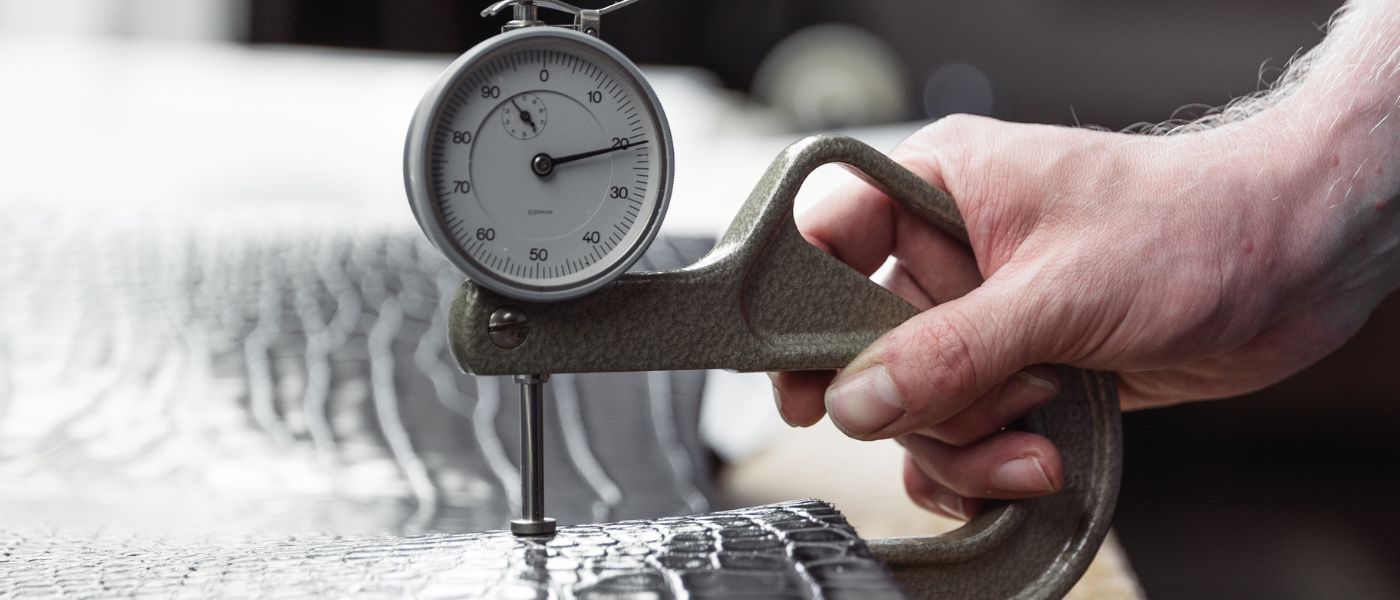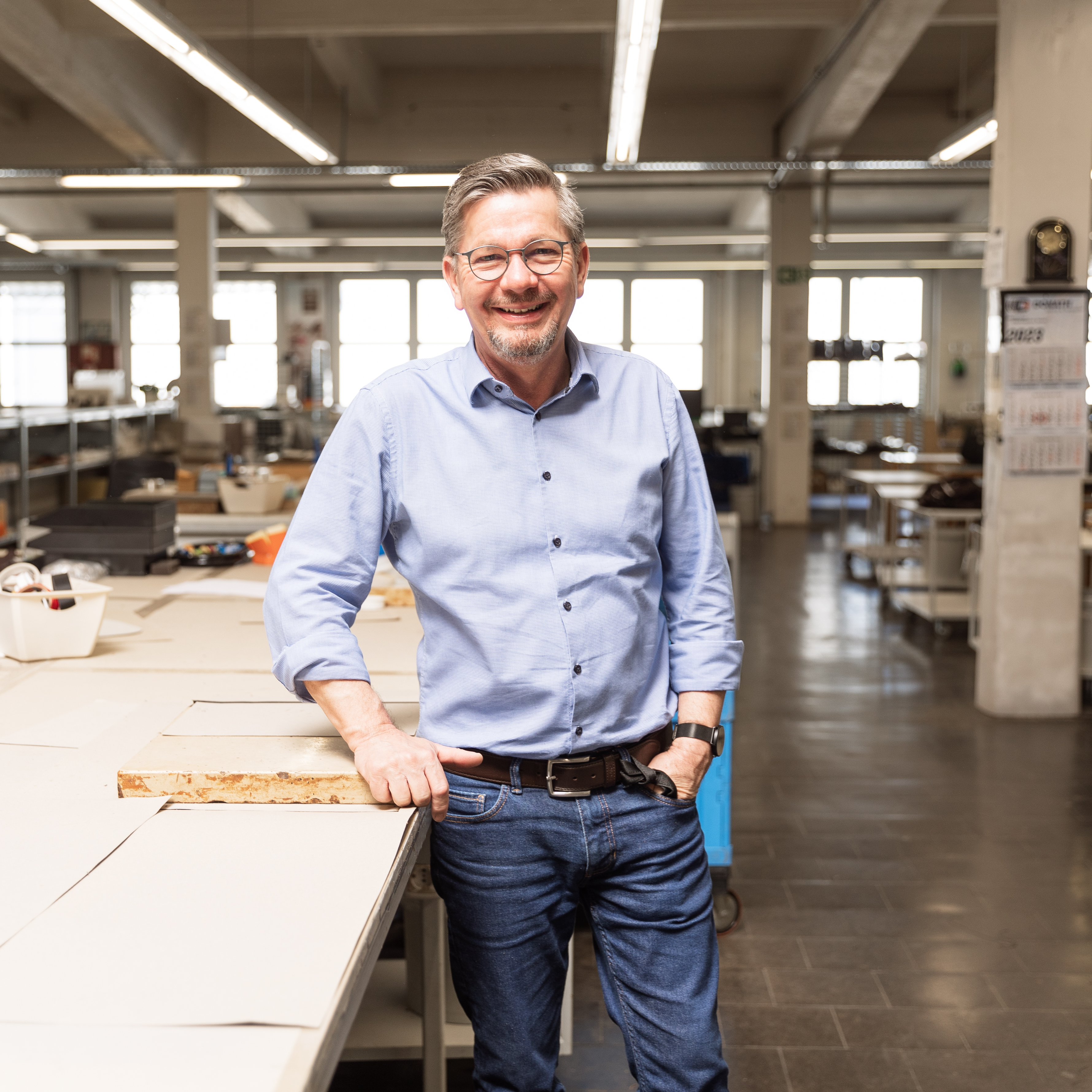Not all leather is the same, as you already know from our other articles. But now we want to delve a step deeper into the world of leather and look together at which leather is the most robust .
Leather is a fascinating material, every piece of leather is unique, every piece of leather has its own strengths and these are exactly what we will now look at together.

What makes leather robust and high-quality?
This question needs to be answered in a little more detail, because leather quality characteristics and leather quality levels depend on various factors.
All types of leather have one thing in common, they are considered robust and resilient.
They are, but there are clear differences in their resistance and we will explain these to you now. Let's get started!
Expert knowledge : As you already know, leather is divided into suede and smooth leather. Suede are types of leather such as nubuck leather, suede or suede .
The surface of these types of leather has been sanded and has a velvety soft feel. This sanding process reduces the surface density of the leather, which affects the strength of the leather.
Smooth leather is clearly the strongest and there is a very simple reason for this. You have probably heard of the grain side , which is the outermost layer of the skin where the animal's fur was.
The grain side is particularly tear-resistant and robust, this is due to the firm and fine skin fibers , which have not been roughened or treated.
But there are other factors that affect the quality and robustness of the leather .
The processing of the leather and the type of tanning have a great impact on its robustness, but you should start even further ahead, because good leather should be well cared for before it is produced.

So let's start at the very beginning, these factors are very important for producing really good, high-quality leather.
-
The age of the animal
Leather from younger animals is more durable and elastic.
As we age, our skin loses its elasticity, and this is also the case with our skin.
-
Food
Do you know the saying: “You are what you eat”? This also applies to the animal from which the leather is obtained. In plain language, this means that the more balanced and healthy the animal’s diet, the better the quality of the leather.
-
The attitude
The way the animals are kept also has an impact on the quality of the leather. The leather from animals kept on pastures is clearly more robust and resistant.
-
The gender
The skin of a young male animal has a finer grain and a denser fiber structure. This is an important factor for the durability and tear resistance of the leather.
-
The cycle of life
The leather of castrated male animals is finer-fibered than that of animals from breeding. The skin of a female animal that has already given birth to many young is also no longer as elastic and full of resilience. As you can see, not only the age but also the life cycle of the animal plays a major role.
-
North Cape or Bahamas?
The climate is an equally important factor for high-quality and robust leather. A colder climate has a positive effect on the quality of the skin.
The 5 most robust types of leather at a glance
Now we will look at the details of the five most robust types of leather, distinguishing
-
The tensile strength ,
which describes the maximum possible tensile load until cracking occurs.
The direction of pull, longitudinal or transverse direction, the type of tanning and many other factors must also be taken into account.
-
Water sensitivity
- The scratch resistance
Cowhide
Cow leather is one of the most common types of leather in global leather production, accounting for 65-70%. That's a pretty big number, isn't it?
-
Tensile strenght:
Cowhide has a high tensile strength , which is one reason why it is often used for motorcycle safety clothing . At speeds well over 300 km/h, it protects the rider from serious injuries. But bags, shoes, belts, bridles and leather clothing are also made from cowhide.
-
Water sensitivity:
Cowhide is relatively water-resistant , which can be further improved by chrome tanning. If the leather is pigmented, the water beads up from the surface.
-
Scratch resistance:
Here you have to differentiate between strong and fine scratches. Has only the surface (pigmentation) been attacked or the cowhide underneath? Scratches are more visible on cowhide than on suede. Fine scratches can usually be treated quickly. Read here how to remove scratches from leather !
Buffalo leather
Buffalo leather is also a type of cowhide and is often used for bags, furniture and even for the interior of cars . Compared to cowhide, it has significantly larger pores .
-
Tensile strenght:
Buffalo leather is a durable, robust and stable leather.
-
Water sensitivity:
Due to its open-pored structure, buffalo leather is more sensitive to water than cowhide.
-
Scratch resistance:
Scratches are much more visible on buffalo leather than on suede, but even here small and fine scratches can be treated quickly.
Suede
Suede leather is often mistakenly referred to as suede .
These two types of leather have a common look and a velvety feel, but they differ in their origin.
Suede is obtained exclusively from wild animals, such as elk, deer, roe deer, chamois. Suede is full-grain leather , while velour leather is split leather .
-
Tensile strenght:
Suede is very strong and robust, even if you don't expect that at first glance. It is a soft and flowing leather that is mainly used for bags, shoes and leather clothing .
-
Water sensitivity:
Due to its open-pored structure, suede is very sensitive to water , so regular and thorough waterproofing is essential for optimal protection.
-
Scratch resistance:
Suede is more scratch-resistant than smooth leather; small and fine scratches can easily be brushed out with a suede brush.
Sheepskin
Sheepskin is the second most widely produced leather in the world. It is a light, soft and very stretchy leather.
-
Tensile strenght:
Around 90% of sheep are wool sheep, which means that the finer and denser the wool, the thinner the leather quality. But also due to fat deposits, sheep leather is not as tear-resistant as goat leather, for example.
It is often used for accessories, lambskin slippers, gloves, book covers, leather clothing and also furniture .
-
Water sensitivity:
Sheepskin is relatively resistant to water, so you should obviously not wash it in the washing machine or take it with you to swimming lessons.
-
Scratch resistance:
As with other types of smooth leather, small and fine scratches are more easily visible, but are also relatively easy to remove.
Goat leather
Goat leather ranks third in world leather production, would you have thought that?
Goat leather is soft and supple and yet very robust leather.
-
Tensile strenght:
Goat leather is a very robust and tear-resistant leather; it is often used for shoes, gloves, bags and shoelaces . Yes, you read that right! Shoelaces made of goat leather are particularly tear-resistant.
-
Water sensitivity:
Goat leather is considered water-repellent, but you should not take a diving course with goat leather.
-
Scratch resistance:
Here, too, small and fine scratches are more easily visible than on suede types. But the scratches can also be treated quickly and easily.
Conclusion
In the world of leather, there are several different types of durable leather, each with its own strengths. Cowhide, buffalo leather, suede, goat leather and sheep leather are all durable materials used in a variety of products.
When choosing the right leather, it is crucial to consider individual requirements and needs. Find out more now and discover the right robust leather for your project!
FAQ
Is artificial leather robust?
Yes and no, artificial leather is water-repellent and you can remove stains and dirt relatively easily with a damp cloth or wet wipes. However, artificial leather cannot keep up with the durability and robustness of real leather.
How can you make leather more robust?
To make leather more robust, regular care with leather balm or oil is essential. Waterproofing sprays protect against moisture and stains. High-quality tanning and careful treatment ensure longevity.
Read on here:


